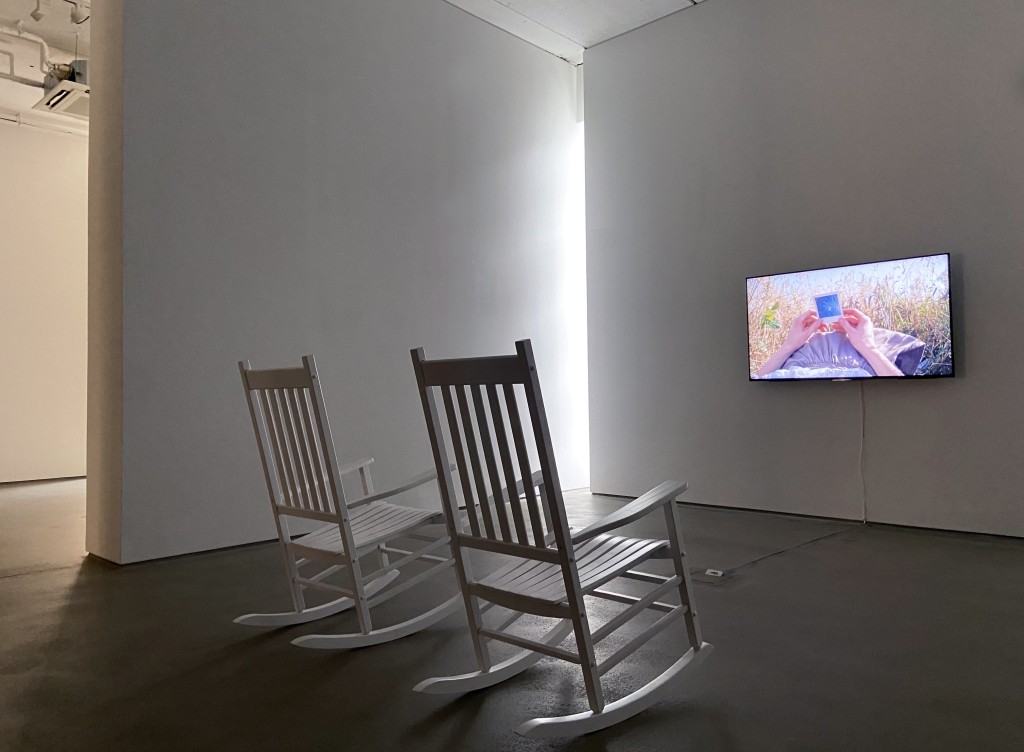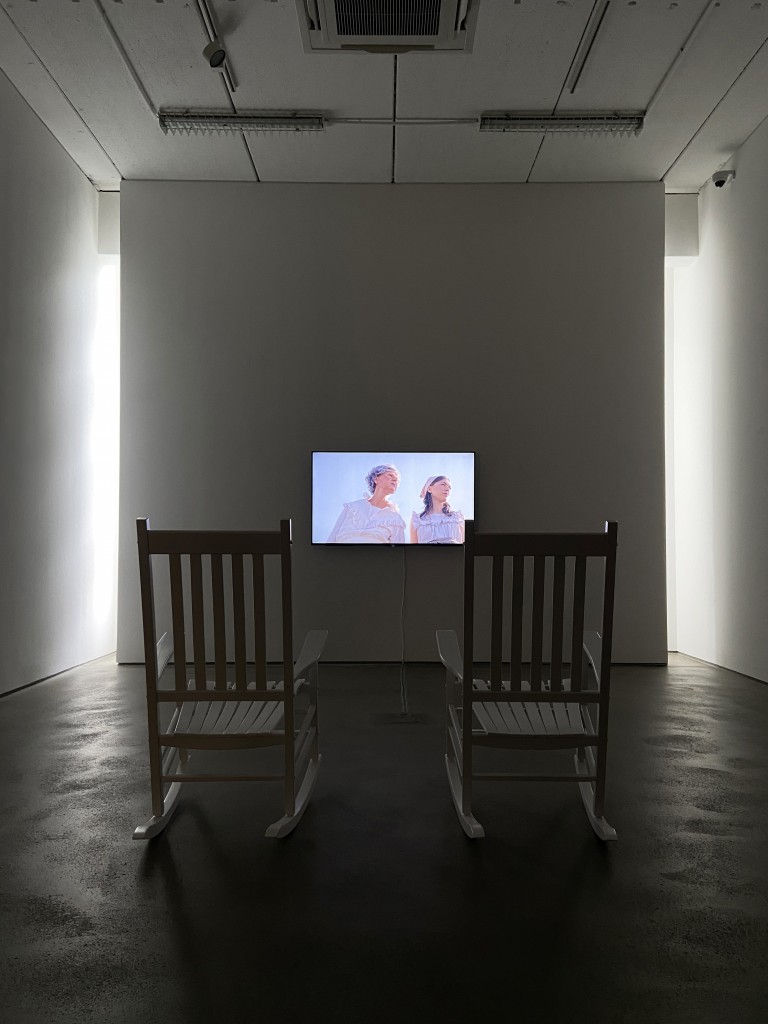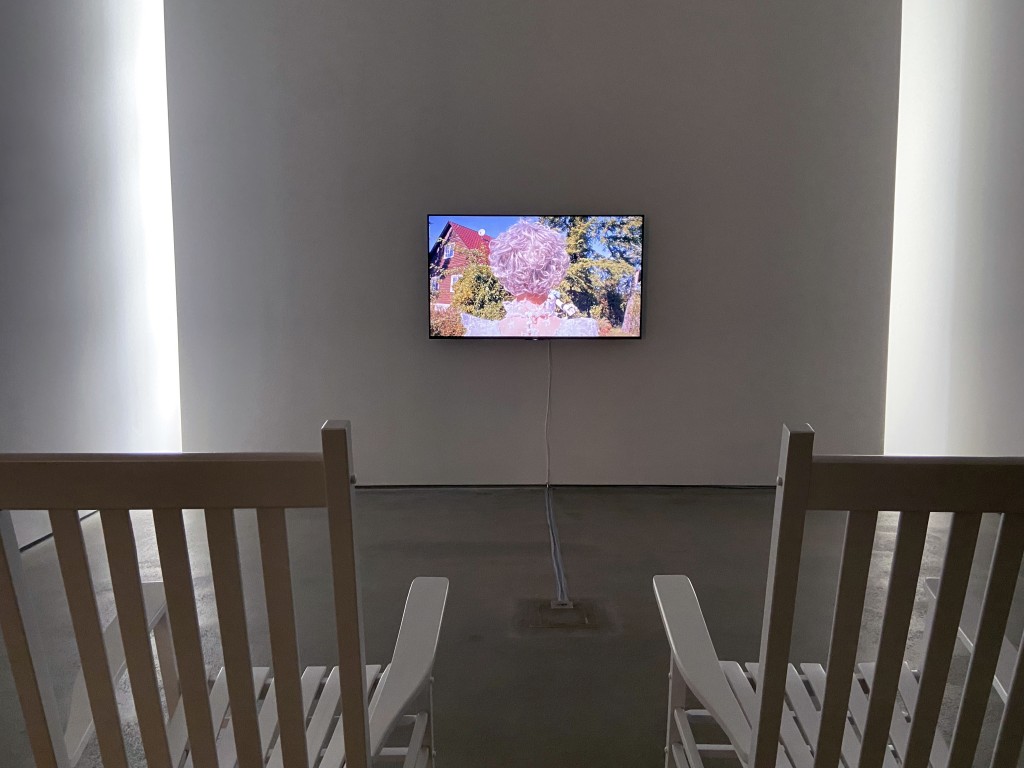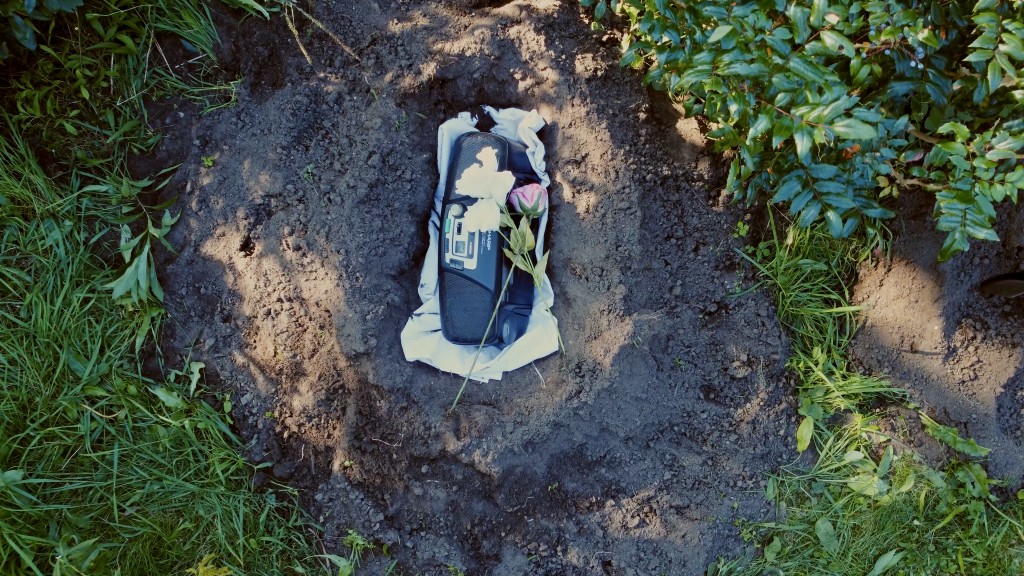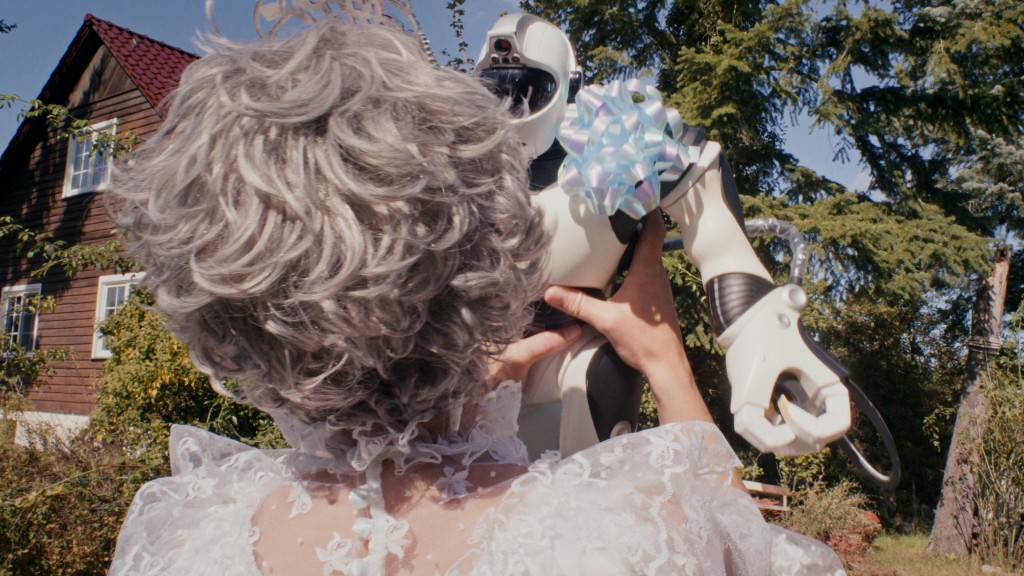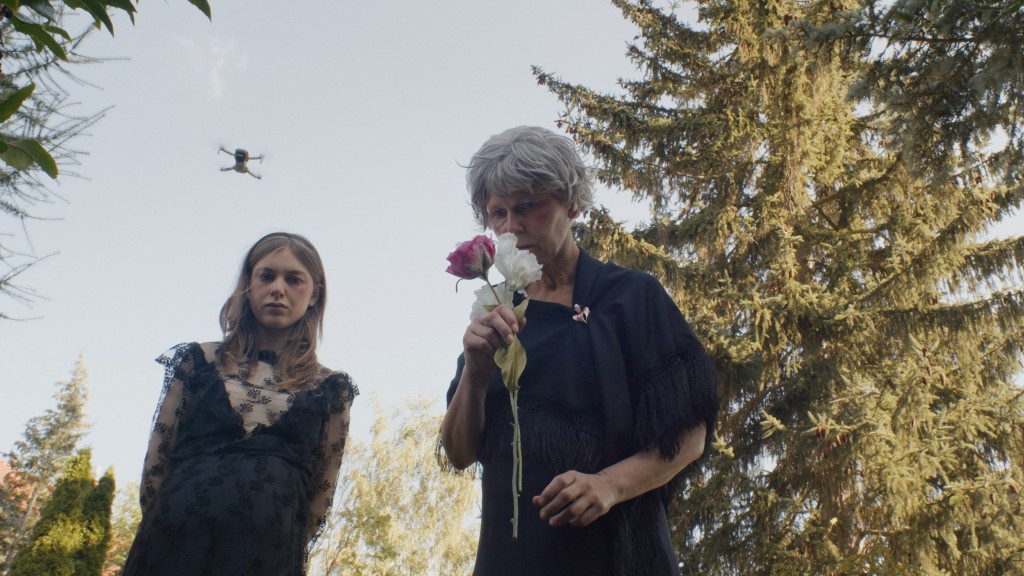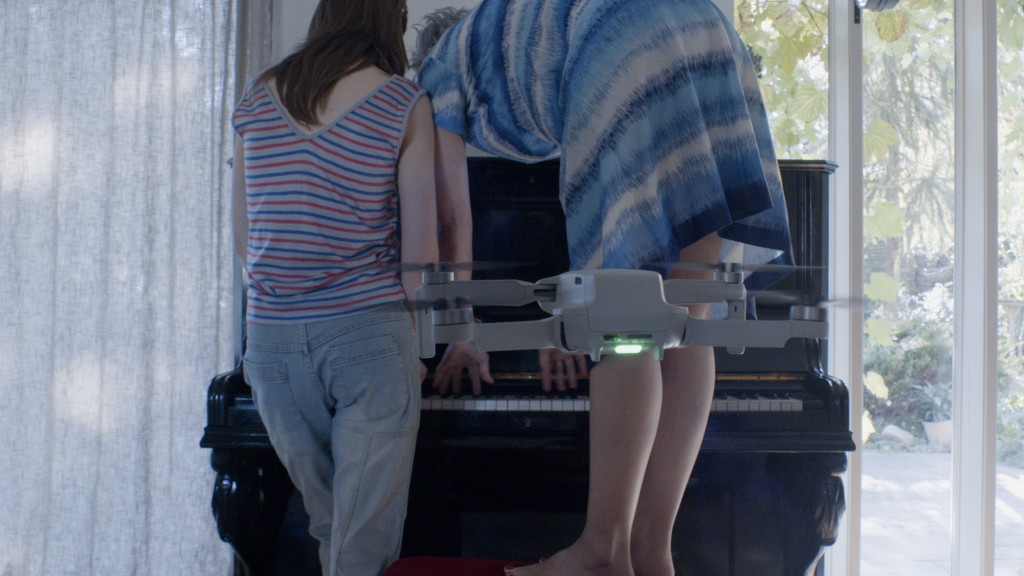G2 Schaulager
LITTLE PICTURES
Lydia Marx
Diplomaexhibition:
July 8 – 27, 2025
OPENING HOURS
(Through public tours):
Wed. 6 – 7 pm / Fri. – Sun. 3 – 4 pm
In Lydia Marx’s video work Little Pictures, a camera drone acts as the roommate of two women who live together in a large house in a rural area. The drone is sister, brother, and friend all at once, serving simultaneously as actress, image producer, and narrator of the film. It guides viewers through the story of Hanna, Lilli, and itself. Along the way, it produces images, explains situations, thoughts, and contexts. It accompanies the two women through their daily lives inside the house and in the outside world — we see shared meals at the kitchen table, leisure activities in the living room and garden, fieldwork, and a funeral. The drone comments on what it sees and experiences. However, it increasingly emerges as an unreliable narrator, as misleading inconsistencies appear within its statements and images: Hanna reads a book upside down, Lilli plays the piano with her toes, typing on a keyboard is described as playing piano, a radio is mistaken for a dog, then destroyed, buried, and mourned.
The drone’s perceptual errors and deviations in pattern recognition manifest visually as actual image distortions. At times, the drone even acknowledges its own shortcomings and fallibility, such as when it remarks at the beginning of the film:
“Although I practiced a lot, I had trouble finding the entrance door. I often bumped into the narrow frame. Lilli was very good in entering the entrance door, even though she did it for the first time.
The backyard looked like the rivers, mountains, forests and shopping centers that I already knew and could usually distinguish when they were connected on maps.”
Here, the drone refers to the way it learns in its technical function as a camera drone with data storage and artificial intelligence: through repetition and reproduction, through the continuous collection of data and its compilation in an archive. Over time, this enables it to recognize, differentiate, and categorize its environment more accurately. The drone collects so-called training data in order to improve — perhaps even to act more like a human? For now, its physical actions and movements often still appear clumsy, even vulnerable. And despite the tenderness that resonates in its statements, they often come across as interchangeable and superficial — memorized, reproducing clichés.
The quote above also touches on another central theme addressed in Little Pictures, one that narratively connects the three very different characters — Hanna, Lilli, and the drone — despite all their emphasized differences: memory.
Not only the two women, but the drone itself possesses a memory. According to its own account, it has a storage unit, which it sometimes describes as a near-poetic archive of memories — for example, when it consciously recalls living with birds who taught it how to fly. The drone’s memory storage is characterized by spatial orientation: the situations and emotions it recalls are tied to specific rooms and places that are connected through what it calls a “map.” When disruptions occur between the connection points on this map, it can lead to disorientation and memory loss. The drone’s memory serves not only as the repository of its own recollections, but the two women have also offloaded some of their memories onto the drone.
In the film, Marx contrasts the drone’s memory and storage capacity with the apparent pregnancies of Hanna and Lilli. She uses the image of human pregnancy to suggest — associatively — the specific significance of the human body as a site of memory: a repository not only of past experiences but also of the visibility of the future within the present.
In Little Pictures, through the drone’s unique characterization, Marx raises the question of how (human) memories are handled in the technological age, and what expectations we place on technical devices in this context. She also asks what humans, from an ethical standpoint, consider to be worth living for. What is the role of the drone in their shared life, and what significance does it have for the two women? While Hanna and Lilli involve the drone in some situations and consider it in their actions, it assumes more the subordinate role of a pet rather than that of an actual roommate. Nevertheless, Little Pictures portrays an almost intimate relationship between human and drone — especially through the unusual use of the device in indoor spaces and its voice as a narrator. This portrayal diverges significantly from the more common, negatively charged association of drones in contemporary visual art as tools of war, surveillance, and control.
Exhibition text by Rahel Schrohe
Trailer:

